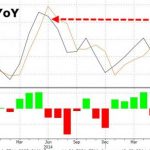“In view of realized and expected labor market conditions and inflation, the Committee decided to raise the target range for the federal funds rate to 2 to 2-1/4 percent…The Committee expects that further gradual increases in the target range for the federal funds rate will be consistent with sustained expansion of economic activity, strong labor market conditions, and inflation near the Committee’s symmetric 2 percent objective over the medium term. Risks to the economic outlook appear roughly balanced”. (FOMC Policy Statement, September 26, 2018)
Against a backdrop of strong economic growth, low unemployment, potential capacity constraints, and increasing inflation, the US Federal Reserve raised its policy interest rate on September 26th for the eighth time since 2015.
The federal funds target range increased to 2 to 2.25%, with one more 25-basis-point hike likely at its December meeting.
As for future developments, the Fed left its federal funds rate projections unchanged and continued to project one more rate hike in 2018 and three in 2019. Assuming three more rate hikes next year, this would bring the federal funds rate to 3 to 3.25% by the end of 2019.
While the Fed’s mandate emphasizes both price stability and the job market, markets are most worried about the inflation risk. When it comes to assessing inflation developments, the Fed relies on the core PCE price index.
The core inflation measure is defined as personal consumption expenditures (PCE) prices excluding food and energy prices. The core PCE price index excludes the monthly volatility caused by movements in food and energy prices to reveal underlying inflation trends. This index, which more closely relates to the national accounts, is a better indicator of consumer inflation than the headline CPI.
As the following chart illustrates, core inflation recently moved slightly higher into the 2% annual range, a pace which is broadly in line with the central bank inflation target of 2%.








Leave A Comment